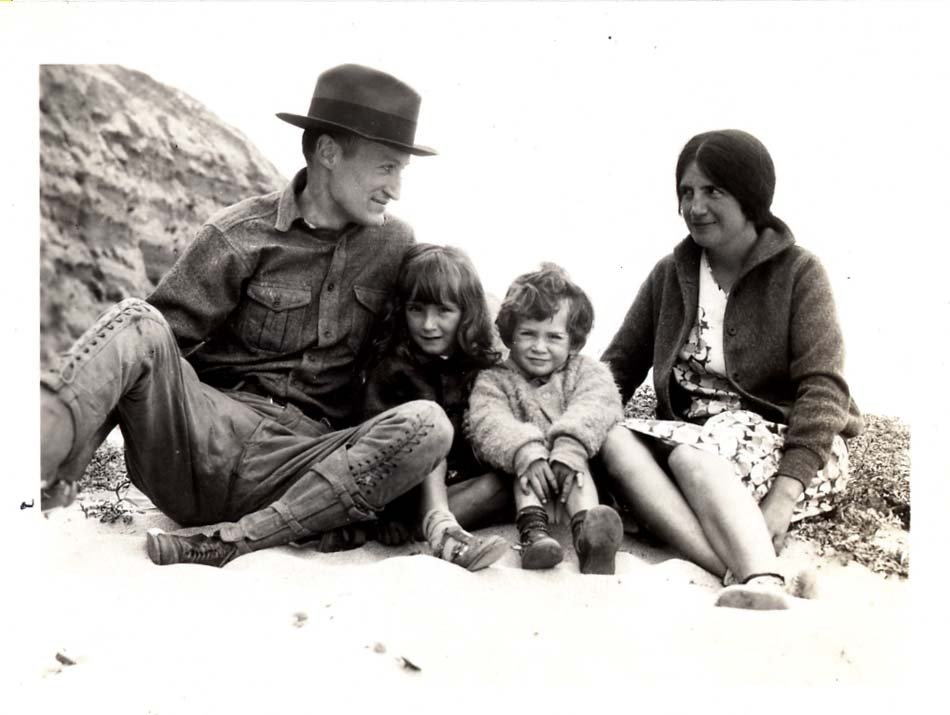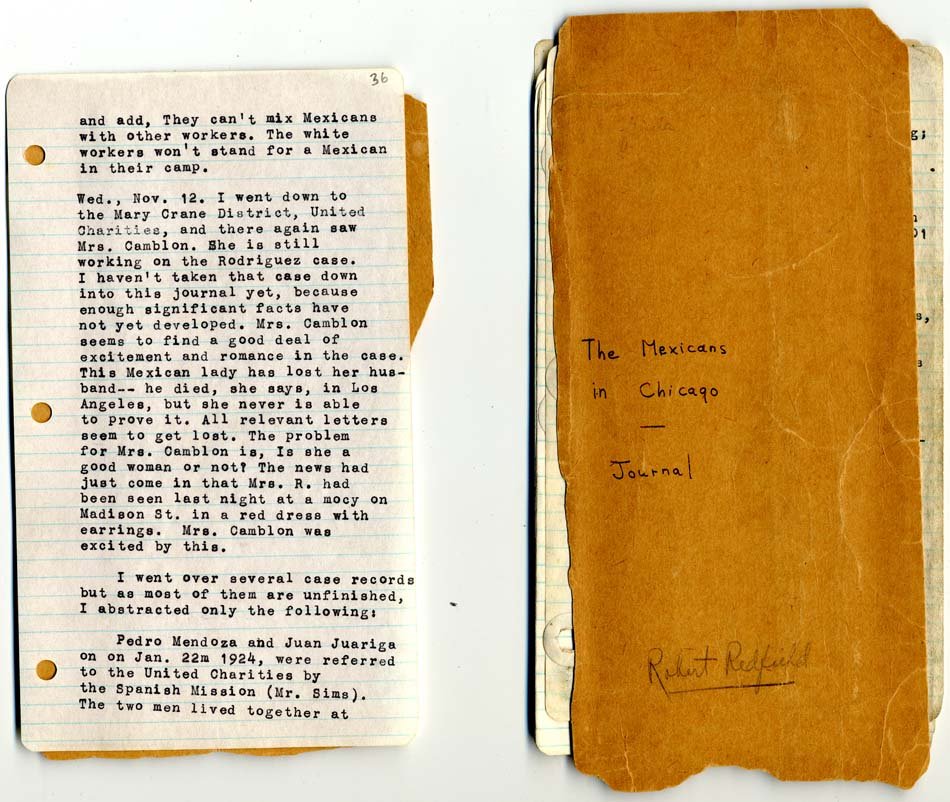

ロバート・レッドフィールド
Robert Redfield, 1897-1958


☆ ロバート・レッドフィールド(Robert Redfield、1897年12月4日 - 1958年10月16日)は、アメリカの人類学者、民族言語学者であり、メキシコのテポズトランにおける民族誌的研究は、ラテンアメリカの民族誌の画期的 な作品とみなされている[1]。高等教育はすべてシカゴ大学で受け、1927年に教授陣に加わり、1958年に亡くなるまで在籍し、1934年から1946年まで社会科学部長を務めた。
| Robert Redfield (December
4, 1897 – October 16, 1958) was an American anthropologist and
ethnolinguist, whose ethnographic work in Tepoztlán, Mexico, is
considered a landmark of Latin American ethnography.[1] He was
associated with the University of Chicago for his entire career: all of
his higher education took place there, and he joined the faculty in
1927 and remained there until his death in 1958, serving as Dean of
Social Sciences from 1934 to 1946.[2] |
ロ
バート・レッドフィールド(Robert Redfield、1897年12月4日 -
1958年10月16日)は、アメリカの人類学者、民族言語学者であり、メキシコのテポズトランにおける民族誌的研究は、ラテンアメリカの民族誌の画期的
な作品とみなされている[1]。高等教育はすべてシカゴ大学で受け、1927年に教授陣に加わり、1958年に亡くなるまで在籍し、1934年から1946年まで社会科学部長を務めた。 |
| Career In 1923 he and his wife Margaret Park Redfield traveled to Mexico, where he met Manuel Gamio, a Mexican anthropologist who had studied with Franz Boas. Redfield graduated from the University of Chicago with a degree in Communication Studies, eventually with a J.D. from its law school and then a Ph.D. in cultural anthropology, which he began to teach in 1927. He was elected to the American Philosophical Society in 1947 and the American Academy of Arts and Sciences in 1950.[3][4] After a series of published field studies from Mexican communities (Tepoztlán in Morelos and Chan Kom in Yucatán), in 1953 he published The Primitive World and its Transformation and in 1956, Peasant Society and Culture. Moving further into a broader synthesis of disciplines, Redfield embraced a forum for interdisciplinary thought that included archeology, anthropological linguistics, physical anthropology, cultural anthropology, and ethnology. Redfield wrote in 1955 about his own experience doing research in Latin America on peasants. As he did research, he realized he had been trained to treat the society as an isolated culture. However, he found people were involved with trade, and there were connections between villages and states. More than that, the village culture was not bounded. Beliefs and practices were not isolated. Redfield realized it did not make sense to study people as isolated units, but rather it would be better to understand a broader perspective. Traditionally, anthropologists studied folk ways in the "little tradition", taking into account broader civilization, the "great tradition". He was elected a Fellow of the American Academy of Arts and Sciences in 1950.[5] One of Redfield's students at the University of Chicago was well-known novelist Kurt Vonnegut.[6] Vonnegut was influenced by Redfield's theories and references them in his novel Slapstick, as well as throughout his non-fiction speeches and commencement addresses. Vonnegut recalls:[7] when I went to the University of Chicago, and I heard the head of the Department of Anthropology, Robert Redfield, lecture on the folk society, which was essentially a stable, isolated extended family, he did not have to tell me how nice that could be. |
経歴 1923年、妻のマーガレット・パーク・レッドフィールドとともにメキシコに渡り、そこでフランツ・ボアスに師事したメキシコの人類学者マヌエル・ガミオ と出会う。シカゴ大学コミュニケーション学部を卒業後、同大学法学部で法学博士号を取得、さらに文化人類学の博士号を取得し、1927年から教鞭をとる。 1947年にアメリカ哲学協会、1950年にアメリカ芸術科学アカデミーの会員に選出された[3][4]。メキシコのコミュニティ(モレロス州のテポスト ランとユカタン州のチャン・コム)での一連の現地調査を発表した後、1953年に『未開世界とその変容』、1956年に『農民社会と文化』を出版。レッド フィールドはさらに幅広い学問の統合へと進み、考古学、人類学的言語学、身体人類学、文化人類学、民族学などを含む学際的な思考の場を受け入れた。 レッドフィールドは1955年、ラテンアメリカで農民について調査した自身の経験について書いている。調査を進めるうちに、彼はその社会を孤立した文化と して扱うよう訓練されてきたことに気づいた。しかし、彼は人々が交易に関わり、村と国家の間につながりがあることを発見した。それ以上に、村の文化は縛ら れていなかった。信仰や習慣も孤立していなかった。レッドフィールドは、人々を孤立した単位として研究することは意味がなく、むしろより広い視野で理解す る方が良いことに気づいた。伝統的に人類学者は「小さな伝統」の民俗様式を研究し、「偉大な伝統」であるより広範な文明を考慮していた。彼は1950年に アメリカ芸術科学アカデミーのフェローに選出された[5]。 ヴォネガットはレッドフィールドの理論に影響を受け、自身の小説『スラップスティック』やノンフィクションのスピーチ、卒業式での演説でレッドフィールドの理論に言及している。カート・ヴォネガットは次のように回想している[7]。 私がシカゴ大学に行き、人類学部長ロバート・レッドフィールドの講義を聞いたとき、それは基本的に安定した孤立した拡大家族であった。 |
| Personal life Redfield was the son-in-law of University of Chicago sociologist Robert E. Park. Redfield and his wife Margaret were the parents of Lisa Redfield Peattie, Professor Emerita at the Massachusetts Institute of Technology; James M. Redfield, a professor of classics at the University of Chicago; and Joanna Redfield Gutmann (1930–2009). Another son, Robert (called Tito), died at the age of twelve from injuries sustained in a sledding accident.[citation needed] Redfield died in October 1958 from complications of lymphatic leukemia.[8] The papers of Robert and Margaret Redfield are located at the Special Collections Research Center, University of Chicago Library.[citation needed] |
私生活 レッドフィールドはシカゴ大学の社会学者ロバート・E・パークの義理の息子だった。レッドフィールドと妻のマーガレットは、マサチューセッツ工科大学名誉 教授のリサ・レッドフィールド・ピーティ、シカゴ大学古典学教授のジェームズ・M・レッドフィールド、ジョアンナ・レッドフィールド・グットマン (1930-2009)の両親である。もう一人の息子ロバート(ティトと呼ばれる)は、そり遊びの事故による怪我で12歳で亡くなった[要出典]。 1958年10月、レッドフィールドはリンパ性白血病の合併症により死去した[8]。 ロバート・レッドフィールドとマーガレット・レッドフィールドの遺品はシカゴ大学図書館特別コレクション研究センターに所蔵されている[要出典]。 |
| Published works Redfield's published works include: Tepoztlan, a Mexican Village: A Study in Folk Life. Chicago: University of Chicago Press (1930). Folk Cultures of the Yucatán. Chicago: University of Chicago Press (1948). The Primitive World and Its Transformations. Ithaca: Cornell University Press (1953). The Role of Cities in Economic Development and Cultural Change. Chicago: University of Chicago Press (1954).[1] The Little Community. Chicago: University of Chicago Press (1956).[2] Talk with a Stranger. Stamford, Connecticut: Overbrook Press (1958). |
|
| https://en.wikipedia.org/wiki/Robert_Redfield |
|
| Fei Xiaotong Melville J. Herskovits Katherine Dunham |
|
Robert Redfield (1897-1958) In 1920 Robert Redfield married Margaret Park, the daughter of Robert Park, a professor of sociology at the University of Chicago. Unhappy in his law career, Redfield contemplated becoming an anthropologist, and his father-in-law offered to fund a trip to Mexico so that Redfield could get a taste of field work before committing to an academic career. Redfield accepted the offer and, following his trip to Mexico, pursued a Ph.D. in anthropology at the University of Chicago, which he completed in 1928.  By 1932, Redfield was an established professor of anthropology at the University of Chicago. In that year, he was invited to join the Carnegie Institution project at Chichen Itza in Yucatan. Redfield was pivotal in expanding the focus of the project, moving away from the history of ancient civilizations to study the lives of those contemporary indigenous people who lived in the area surrounding El Castillo, the pyramid of Chichen Itza. While in Mexico, Redfield wrote extensive letters to his wife Margaret, some of which are presented here. She served Redfield as a close personal confidant, but he also considered her an intellectual and professional peer, as evidenced by the amount of detail that he gives her about his work in this correspondence.  Mexicans in Chicago While assisting the Department of Public Welfare to gather information about immigrant housing in Chicago, Robert Redfield interviewed people in small Mexican communities sprinkled throughout the southwest of Chicago in 1924. Manuel Gamio, an archaeologist and former government official from Mexico, made Chicago his base in the 1930s, as he called attention to the lives of Mexican immigrants, the "forgotten minority," in the United States. |
ロバート・レッドフィールド(1897-1958) 1920年、ロバート・レッドフィールドはシカゴ大学の社会学教授ロバート・パークの娘マーガレット・パークと結婚した。法律家としてのキャリアに満足し ていなかったレッドフィールドは、人類学者になることを考え、義父はレッドフィールドが学問の道に進む前にフィールドワークを経験できるよう、メキシコ旅 行の資金援助を申し出た。レッドフィールドはこの申し出を受け入れ、メキシコ旅行の後、シカゴ大学で人類学の博士号を取得し、1928年に修了した。 1932年までに、レッドフィールドはシカゴ大学の人類学教授として地位を確立した。その年、彼はカーネギー研究所がユカタン半島のチチェン・イッツァで 行ったプロジェクトに招かれた。レッドフィールドは、古代文明の歴史から、チチェン・イッツァのピラミッドであるエル・カスティーヨの周辺地域に住む現代 先住民の生活を研究するという、プロジェクトの焦点を拡大する上で極めて重要な役割を果たした。メキシコ滞在中、レッドフィールドは妻マーガレットに宛て て膨大な手紙を書いた。マーガレットはレッドフィールドの個人的な親友であったが、レッドフィールドはマーガレットを知的、職業的な同輩とみなしていた。 シカゴのメキシコ人 ロバート・レッドフィールドは1924年、シカゴの移民住宅に関する情報収集のために公共福祉局を支援するかたわら、シカゴ南西部に点在する小さなメキシコ人コミュニティの人々にインタビューを行った。 メキシコ出身の考古学者で元政府高官のマヌエル・ガミオは、1930年代にシカゴを拠点とし、アメリカにおける「忘れられた少数民族」であるメキシコ系移民の生活に注意を喚起した。 |
| Robert Redfield (1897-1958) En 1920, Robert Redfield, se casó con Margaret Park, la hija de Robert Park, un profesor de sociología de la Universidad de Chicago. Descontento con su carrera de leyes, Redfield contempló ser antropólogo, y su suegro le ofreció pagarle un viaje a México para que Redfield se diera la oportunidad de conocer el trabajo de campo antes de comprometerse con una carrera académica. Redfield aceptó la oferta, y después de su viaje a México, comenzó un doctorado en antropología en la Universidad de Chicago, el cual terminó en 1928. En 1932, Redfield ya era profesor de antropología en la Universidad de Chicago. En ese año se le invitó a integrarse al proyecto del Instituto Carnegie de Chichén Itzá en Yucatán. Redfield fue fundamental para expandir el enfoque del proyecto, llendo más allá de la historia de las civilizaciones antiguas para estudiar las vidas de esos indígenas contemporáneos quienes vivían en el área alrededor de 'El Castillo', la pirámide de Chichén Itzá. Mientras estaba en México, Redfield escribió cartas extensas a su esposa Margaret, algunas de las cuales se presentan aquí. Ella fue su confidente, pero él también la consideraba como su colega intelectual y profesional, lo que es evidente por la cantidad de detalles que él le dá en sus cartas acerca de su trabajo. |
|
| https://x.gd/YgG7e |
リ ンク
文 献
そ の他の情報
Copyleft, CC, Mitzub'ixi Quq Chi'j, 1996-2099
☆
 ☆
☆